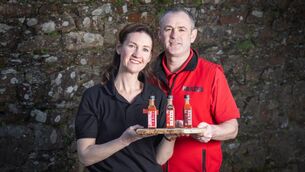In the garden: Yellow plants having their day in the sun

Tulip clusiana ‘Cynthia’ with their star-shaped flowers basking in spring sunshine. See Plant of the Week.
‘April showers bring May flowers,’ or so the saying goes - and rain showers have been the order of the day this week after a fortnight of glorious spring sunshine and dry weather.

I plan to cut down the holly tree completely to the ground and clean up any fallen leaves at the base and mulch with garden compost in the hope that the plant will regenerate from the base.

Another native plant appearing in the hedgerows right now is the common primrose, or primula vulgaris.







 App?
App?


